What are elements that make great products? First and foremost is the customer (what do they need...). Next up is a specification (what does the product do to serve that need). The implementation (does it work...) is critical, and of course the mechanical design (Is it easy to use and does it look cool).
The Kemper Profiler is such a product. Looks good, works great, and of course well serves the needs of guitarists. Artists using Profilers range from rock legend Stevie Winwood to shredders Steve Morse and Paul Gilbert, to jazz virtuoso Pat Metheny. For the uninitiated, the Profiler family of guitar processors allow guitarists and bass players to create (profile) and play through specific combinations of effects processors, amplifier, cabinet, and microphones for use in the studio or on stage.
There's only a handful of product designers who have been successful building products for both keyboardists and guitar players. Christoph Kemper and his team are such designers. The Profiler is not their first rodeo. Taking advantage of increasingly powerful DSP processors, Christoph and his team started with the Access Virus synthesizer in 1997, and then added the Profiler guitar processor in 2012.
So when Christoph was willing to discuss some of his ideas with us, we jumped at the chance. The interview was done immediately after the release of the Profiler Stage, which took the initial concept of the Profiler and adapted it in a floor unit.
Before we get started please note that KVR and Kemper Amps are giving away a Profiler Stage, so please check that out here.
Where are you at the moment?
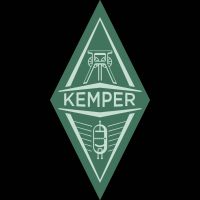 Right now I am at home, in the city of Bochum. Deep in the heart of the former mining and steel production area in Germany. This is also the reason why there is a mining tower in the Kemper logo. Coal and steel have been shaping the industry and also the people here for a long time. The last coal mine just closed last year because it was mined out.
Right now I am at home, in the city of Bochum. Deep in the heart of the former mining and steel production area in Germany. This is also the reason why there is a mining tower in the Kemper logo. Coal and steel have been shaping the industry and also the people here for a long time. The last coal mine just closed last year because it was mined out.
Nowadays the area is moving forward into new technologies, green technologies and a lot of digital business, a very exciting area with loads of universities and great talent. Unfortunately I am just meeting with one great talent and a dear Kemper employee named Lukas Vogel, who's becoming a bit too successful with his band (laughs). We will be missing him at the company, but of course it is great that they are so successful. The band is called the Grand Brothers. They do electronic music around a modified grand piano that gets "treated" and played with some MIDI controlled hammers and tines ... without doing any damage to the instrument of course. They even performed at the renowned Elbphilharmonie venue for classical music in Hamburg and scored some movies.
How did you first get into making music products?
I am an electrical engineer. That's the technical part. I wanted to combine both my musical and technical interests while I was in school, but I was not sure how I would do it. I was developing audio filter algorithms and code, just out of personal interest. Amongst many other tone and sound mining activities in 1995 I rented a rotary speaker and put it into my living room, and started to analyze its sonic behavior and came up with a digital model of it. I couldn't do that today because I have kids now, and they would mess up the cabling ... (Laughs).
Was there any particular experience that made you believe you could be successful with music technology products?
There was a point in time where I realized that I had created filter algorithms that I couldn't find in other products. But actually wanted in an instrument for myself. This was around the time when virtual analog synthesizers like the Clavia Nord Lead were just coming out. So, those were a proof of concept, and made me think that there is obviously a market and so designing and building electronic instruments could be a real job and not just a hobby for me.
I joined forces with a guy who had founded a company named Access. He was already doing remote controllers for synthesizers like the Waldorf. The Access Virus Synthesizer was our first product, and it came out in 1997. The successor - the Virus TI2 - is still available today. This encouraged me to continue researching, analysing, and coding, and that's what I am still doing today: coding.
How did you make the jump from designing synthesizers to designing guitar products?
Well, even back in the day when I modeled the rotary speaker, which is basically an amplifier and a speaker, not being able to play guitar didn't keep me from doing that. And I have always been a huge fan and interested in great guitar sounds, as a musician, writer and producer.
The Access Virus had been well accepted in the keyboard and producer world as a product to model analog synthesizers because they sounded great. The Virus would be on the stage with bands like Depeche Mode, but that hadn't yet happened in the Guitar World with the modeling products at the time. They were mostly back in the hotel rooms being used to practice and make demos. And I thought, there is something wrong here, and so I started talking to lots of guitarists, and decided to give it a try and see what would come out.
When I started I was thinking as a technical person, and from an engineering point of view, a guitar set up is not very complicated. There's FX before the amp, and then after the amp, so it was easy to comprehend and not too difficult to implement. I had worked with guitarists in the past, so I knew about some of problems they had transferring their sound from the studio to the stage. And, because of products that were already on the market, we had examples of what worked, and what didn't. But we wanted our product to be different.
What kind of differences?
For example, there are many possibilities since Kemper OS 5.7. Now reverb algorithms can be positioned before or after the Amplifier section. You can have Reverb Modulation into Delay into Reverb, which sounds crazy, but really opens up the possibility of new sounds for guitarists. To put delays and reverbs into their designated modules makes sense though as these modules have special routing features which can be defined in the Rig parameters. That's not a common thing in other digital amps.
Is there any shared technology or developers between Access and Kemper, or are they entirely separate?
It is the same team, and the technology also overlaps by a good amount. However, guitarists emphasize different topics than keyboardists, of course.
Where do you think the balance between hardware vs software is going?
I think it is fairly simple. Software on a computer is perfect for managing hundreds of effects or plug-ins in a studio project with partial offline rendering capabilities. Hardware products dedicate themselves to more targeted application, while offering focused (even old school) access to central functions, low latency without hassle and mostly better reliability, as they don't depend on general purpose operating systems.
What processor are you using for the Profiler?
It's a classic DSP and host processor design. For the sound it's the latest incarnation of the Motorola DSP, which is now made by NXP. There is another processor for doing stuff like input and output, display USB Ethernet and everything else.
I program the DSP and my colleagues handle the host processor operations. We all come from the synthesizer world where people want to have as many physical knobs and buttons as possible. This is actually how the company started when my former partner did remote control for synthesizers so that users wouldn't have to use a mouse or navigate through displays. We like the philosophy of giving players direct access. I mean, if you're going to make a guitar amp, you better have a Gain knob...(chuckles).
How do you make decisions about what to do next with Kemper products?
We carefully listen to musicians and aim to realize new features by the order of utility value. However, the timing is also dependent on the complexity. By our observation our company is industry-first in providing new features via free-of-charge firmware downloads. We did our first for the Access Virus way back in 1998. It was a Vocoder effect.
What inspired the original Profiler's toaster industrial design concept?
I thought of having an amp in a lunchbox format that would fit on a cabinet as well as on a desktop of a small recording studio. Therefore the tilted panel. We wanted immediate access and optical feedback to the signal flow, as well as a base line of potentiometers that reflect the controls of a classic tube amp. We needed some volume in the back to fit the power amp. Still the device should only consume a minimum area. That was it.
There's often confusion about the difference between Profiling and Amp Modeling. What's the difference from a customer's perspective?
Well, modeling is based on the concept that the behaviour of electronic devices is mimicked with digital technology. And for this some tonal decisions have be taken by the engineers. But as the engineers' idea of the perfect Marshall Plexi tone (e.g. Jimi Hendrix) most probably will differ from the guitar players' idea of their perfect plexi tone I thought of a way that allows for the musician to bring his personal tone with his very own equipment into the digital domain. The Profiler just listens to the guitar players rig, purely musically and sonically. And provides the result. And the musician can at all times change the setup and vary the tones. With modeling you are stuck: "Here is our idea of an AC30! Live with it!" Kind of:-).
How many of your customers create their own profiles vs using the profiles of others?
The number using profiles made by others is much higher. We rely on those with great sounding gear to make Profiles for their fellow users, either as a third-party business, or for free. We have a 4-digit number of profiles available for free from professional vendors, as well as a 5-digit number of free profiles on our Rig Exchange.
Rig Manager 3.0 Mini Review
Rig Manager is the the free standalone application that allows a user to control the Profiler from their computer. No audio is passed through Rig Manager, just control information. All the audio processing work is actually done by the Profiler hardware.With more time on our hands these days we are all learning more about music gear we already own. It has been a personal pleasure to get to know my Profiler better because it is SO deep. That learning has been made a lot easier by the Rig Manager software.
Trying to develop a software editor for hardware with the depth of the Profiler is not a simple task, even if the designer has control over the features of the hardware. As an example, Opcode's development of a software editor for the Kurzweil K2000 took more than a year, despite the fact that we had designed a framework to make editor development easier. The K2000 required an approach to the software GUI that didn't fit into any framework.
Studio to stage
A lot of clever thought has gone into the way the Profiler hardware works for performers. The Profiler defines a collection of FX, amps, and cabinets as a "Rig", and series of Rigs is a "Performance". There is a tremendous amount of editing of Performances possible on the hardware, and that functionality has been finding its way to the Rig Manager.
In fact doing any kind of review of Rig Manager is difficult. Since the interview with Christoph there have been three major updates to Rig Manager and Profiler OS that have addressed just about every missing feature I could imagine.
We ran Rig Manager 3.0 on a:
- Mac Pro (late 2013) running High Sierra 10.13.6.
- 16 GB RAM.
- 1 TB SSD.
- Profiler running 7.2.2.16146.
- Rig Manager 3.0.120.
The GUI is laid out quite well in a way that mirrors the Profiler hardware. The upper part of the screen is a librarian of everything Profiler. There is a list of Rigs, Performances, and Presets on the Profiler hardware, on the host computer, and in the cloud. There is also searchable metadata like type, amp and cabinet choice, Rig author, degree of gain, etc.
Directly below the library is a series of squares that describe the signal path through the Profiler. The squares include slots for the 4 pre-amp effects, the Amp/Cabinet, and the 4 post-amp effects slots. One should think of the pre-amp effects as a pedalboard and the post-amp effects as studio rack gear.
Each square can be clicked on to edit its specific parameters, and presets can be dragged from the preset library and dropped on the relevant squares. Changes made to either the software or hardware are immediately updated on the other. If an external controller is assigned the range of values for each parameter shows up as a blue line.
MIDI Control
The Profiler makes extensive use of MIDI because the designers have had lots of experience with their Access products. The Profiler hardware has a highly flexible way to map MIDI switches and continuous controllers to any parameter. It would be nice to see the various MIDI routings for switches and continuous controllers. Given the commitment Kemper has made to both the hardware and the software, a useful solution is likely on the horizon. Like the Profiler itself, Rig Manager is an ongoing development, which is very cool for every Profiler owner.
Rig Manager is indispensable for any guitarist wanting to use their Profiler in a studio setting, or to configure it for the stage.
And, behold KVR and Kemper Amps are giving away a Profiler Stage. There is no cost to enter. Check it out here.

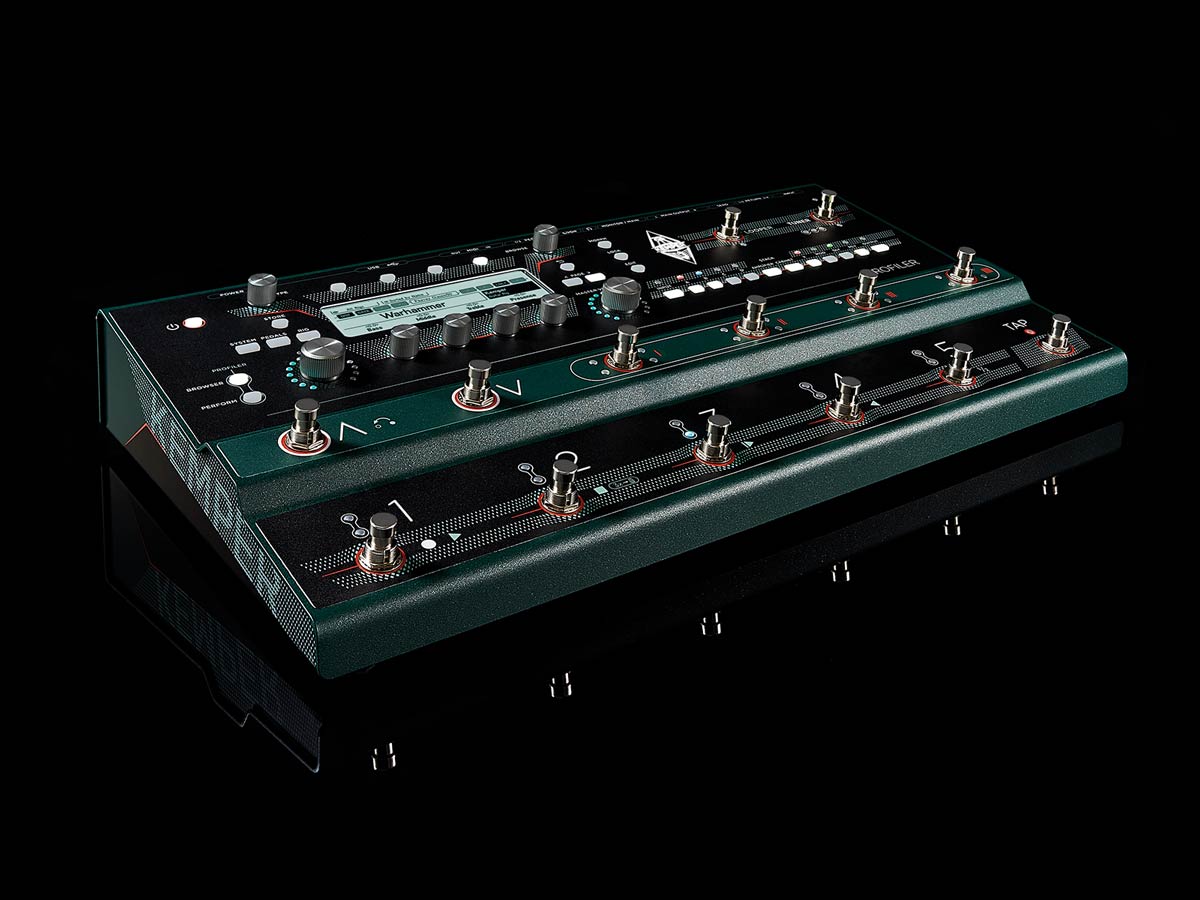

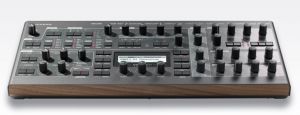
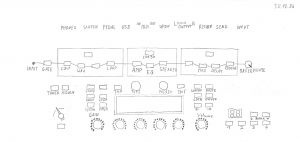
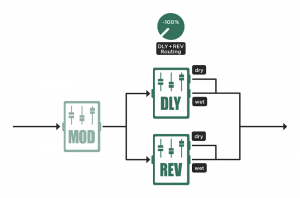
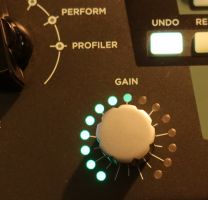
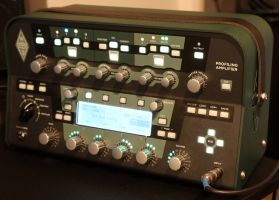
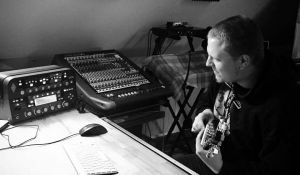
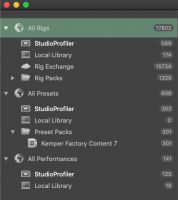
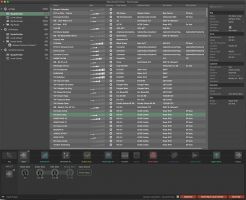



 Other Related News
Other Related News

